20170917 slowwalker
The relationship between Buddhism and Confucianism was very peculiar in Korean Society. Buddhism was accepted 2000 thousand years ago. Confucianism was accepted at 12C from china. A Confucianism accepted at that time was not politcal ideology based from the teaching of Confucius. In china when Buddhism was accepted Original Confucianism had lost their influence in chinese philosophy society. Original Confucianism was not a philosophy for the meaning of life but for a political order. The scholars felt thirst on deep thought. Naturally orthodox confucianism was gradually disappeared.
Later chinese scholars tried to merge Buddhism with Confucianism. More clearly speaking, Confucianism accepted the view of Buddhism on the existence of reason and emotion, the structure of human spirit, etc. The name of this study was Seong Lee Hak (性理學) Seong Lee Hak is korean pronounciation, so I don't know how to read in chinese style. Anyway with the Seong Lee Hak, Buddhism was weakened quickly.
Korea had accepted Seong Lee Hak at late Koryeo Dynasty. With a collapse of the Koryeo Dynasty, Buddhism could be lost their influence. But a famous monk was a master of the first king of Choson Dynasty. Buddhism had helped the first king to build the Chosun Dynasty.
In Chosun dynasty, the influence of Buddhism had been weakened gradually. But in the Palace, you can find the trace of Buddhism.
Today I'd like to introduce you that trace in Confucianism Palace.
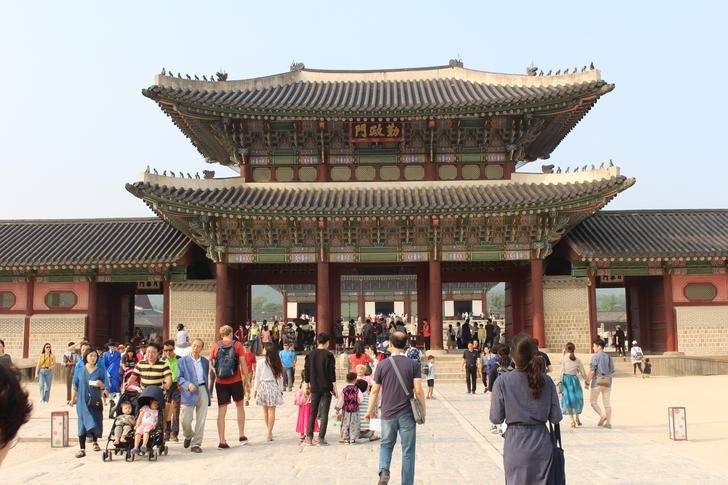
This is a gate to enter the main building of Palace. The name of the gate is Geun Jeong Moon. Here Geun means working, Jeong means politics and Moon means gate. I already posted, Choson thought the order as the most important principle in ruling country. So you can find five gates there. The center for king and king's family, next two for the officials and last 2 for the workers.
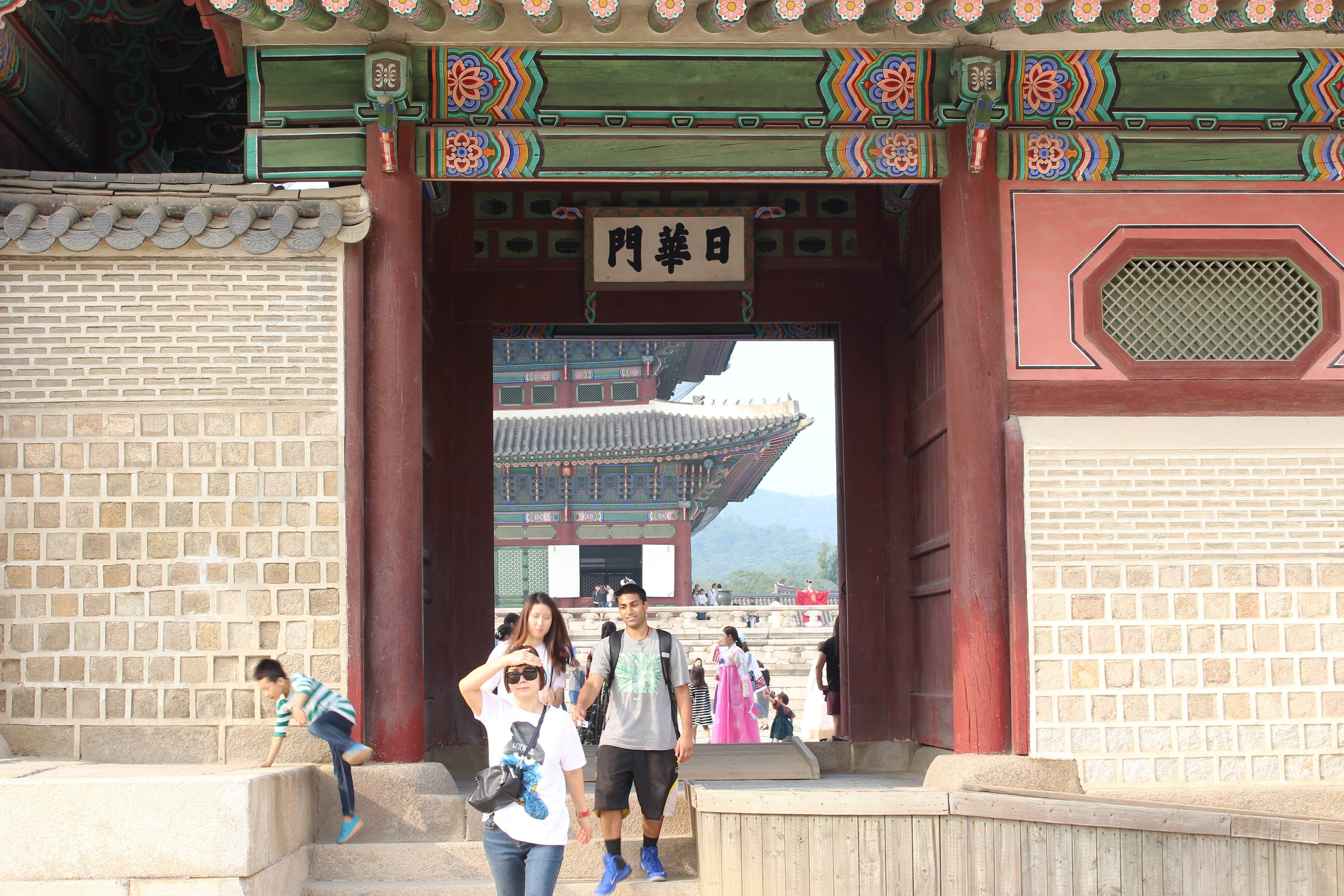
The door for the workers.
Under the roof you could find the trace of Buddhism.
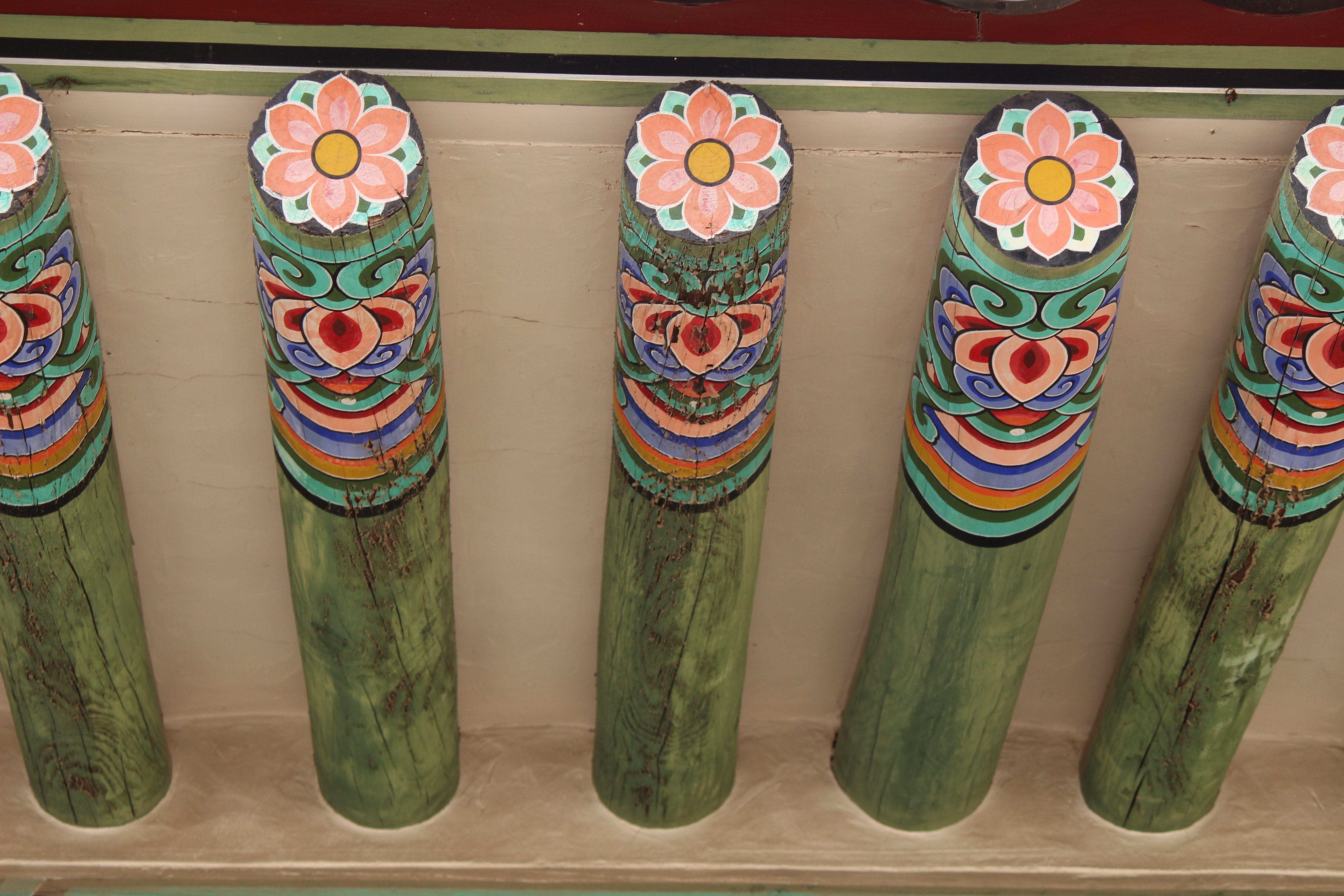
It looked familiar to Buddhist Temple, right. it is lotus and as same as that of Buddhist Temple.
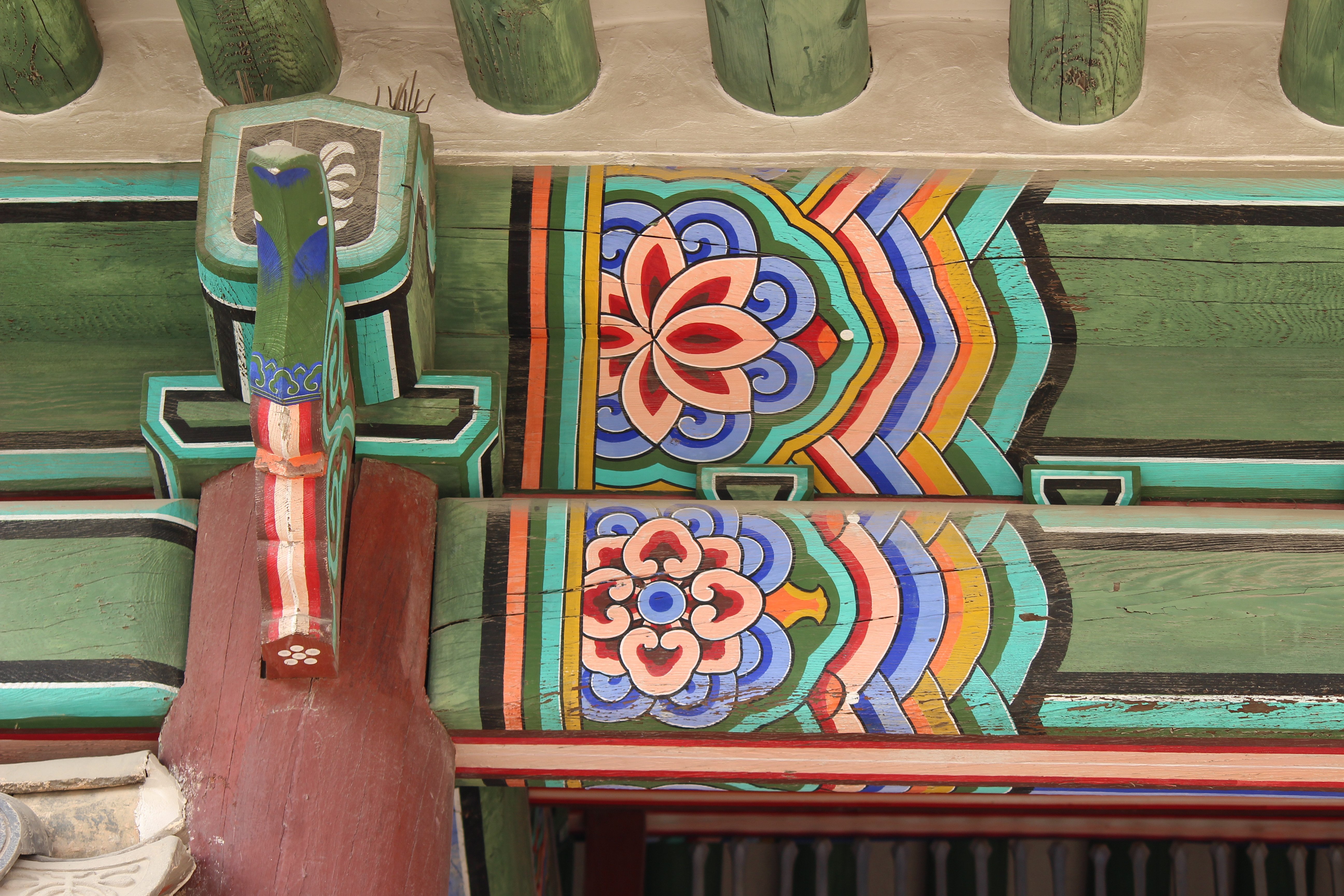

I took the photo of this patterns on the ceiling

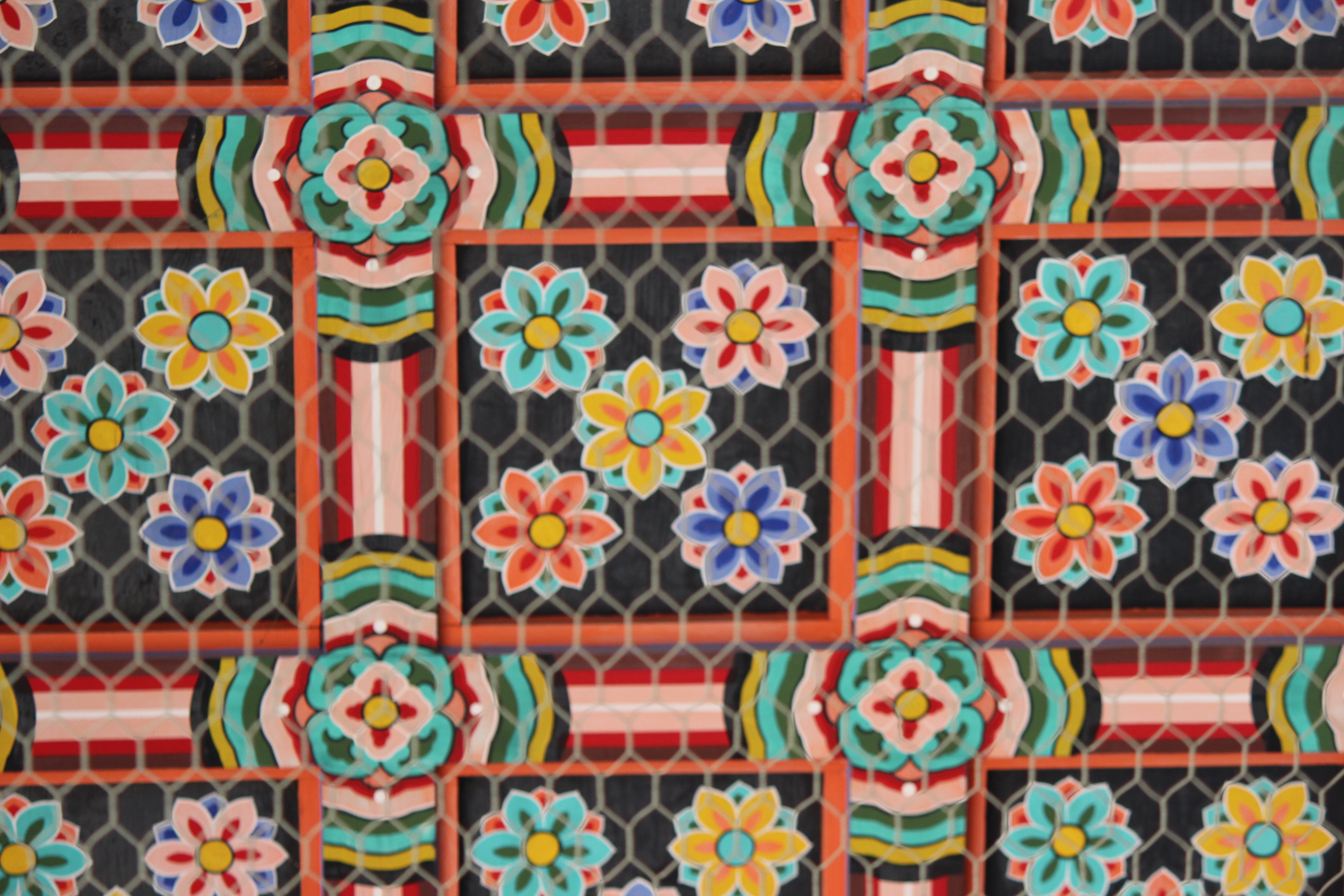
Every patterns seemed to come from the symbols of Buddhism.
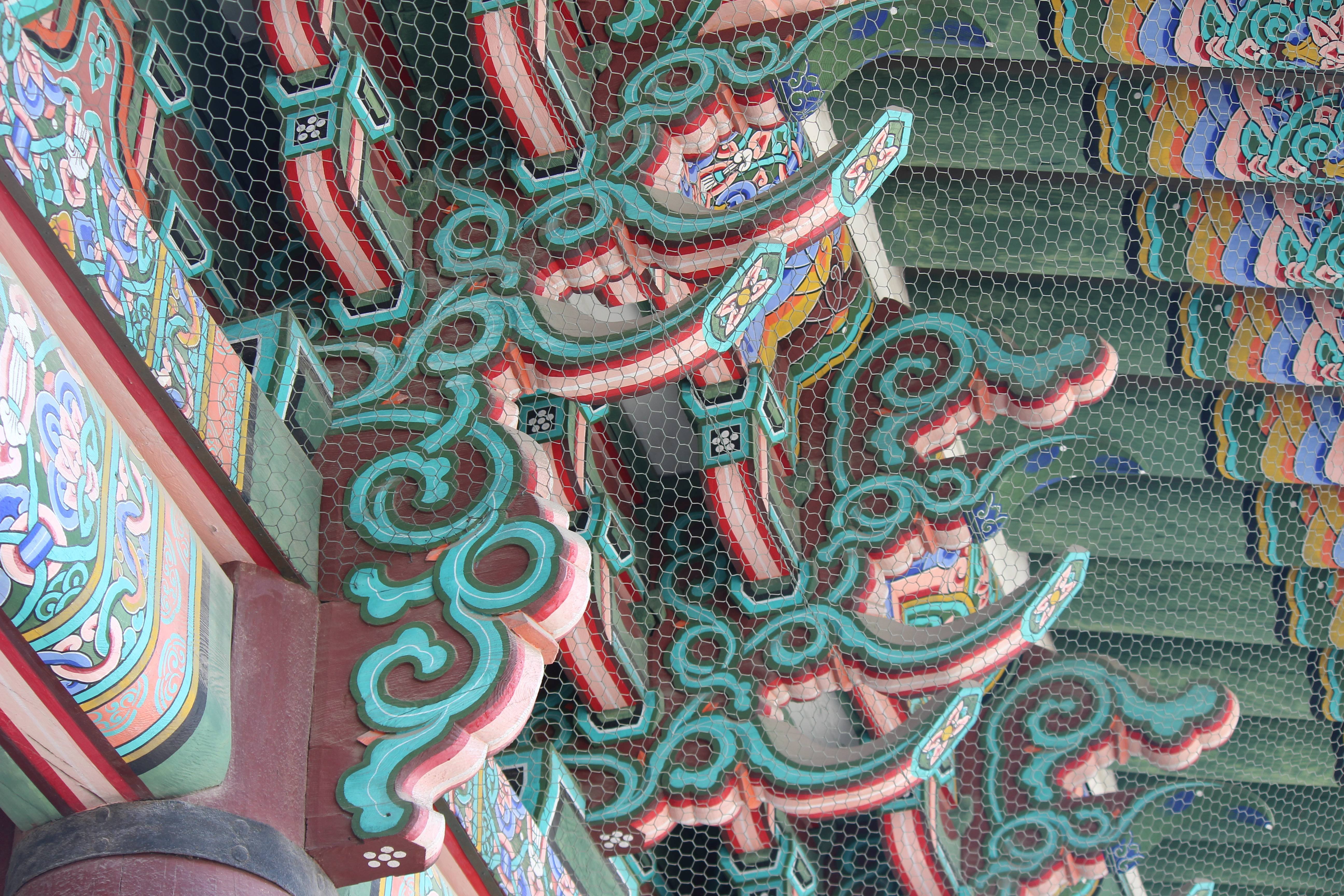
In my guess, this kinds of structure and patterns were inherited from Koyreo Dynasty. In Koryeo Dynasty, the influence of Buddhism was much more stronger. Actually Koryeo Dynasty was Buddhist kingdom.
So naturally the style of building a palace was well made according to Buddhist construction style. Maybe Choson dynasty officials had taken it for granted.
So we could look at the lotus patterns in Choson dynasty Palace.
I took the pics of the rooftop. There I could see the last animal. It looked like a dragon. But I couldn't confirm wether I am right or not.
Thank you for reading
